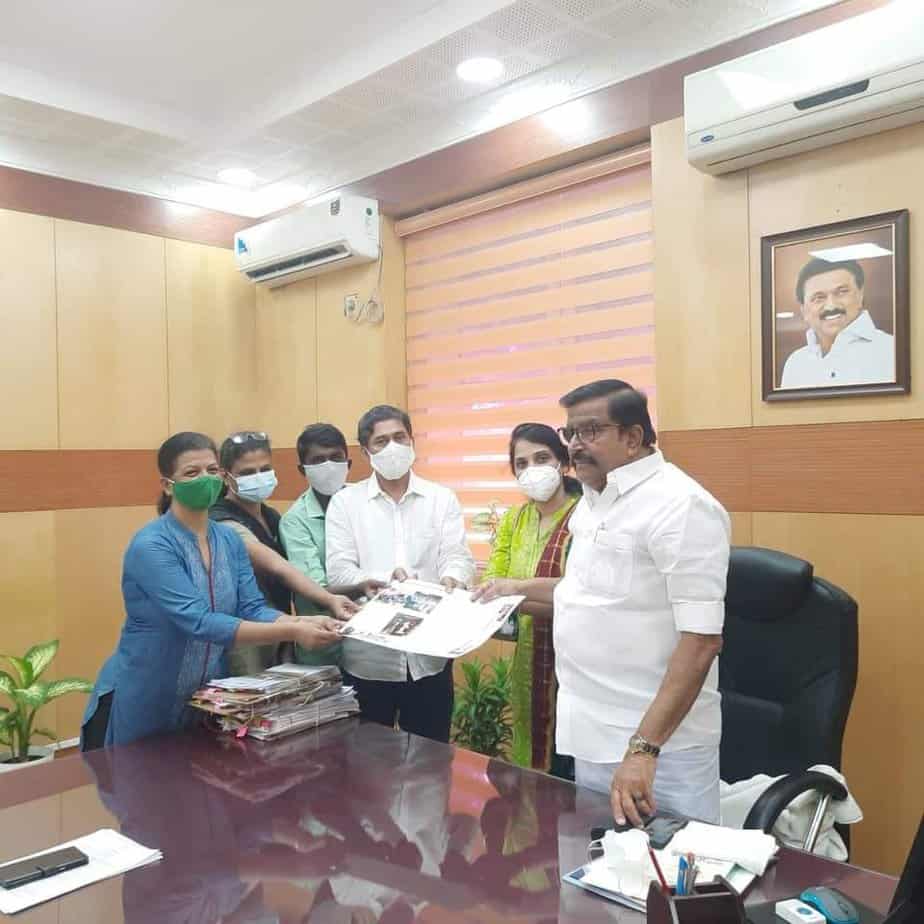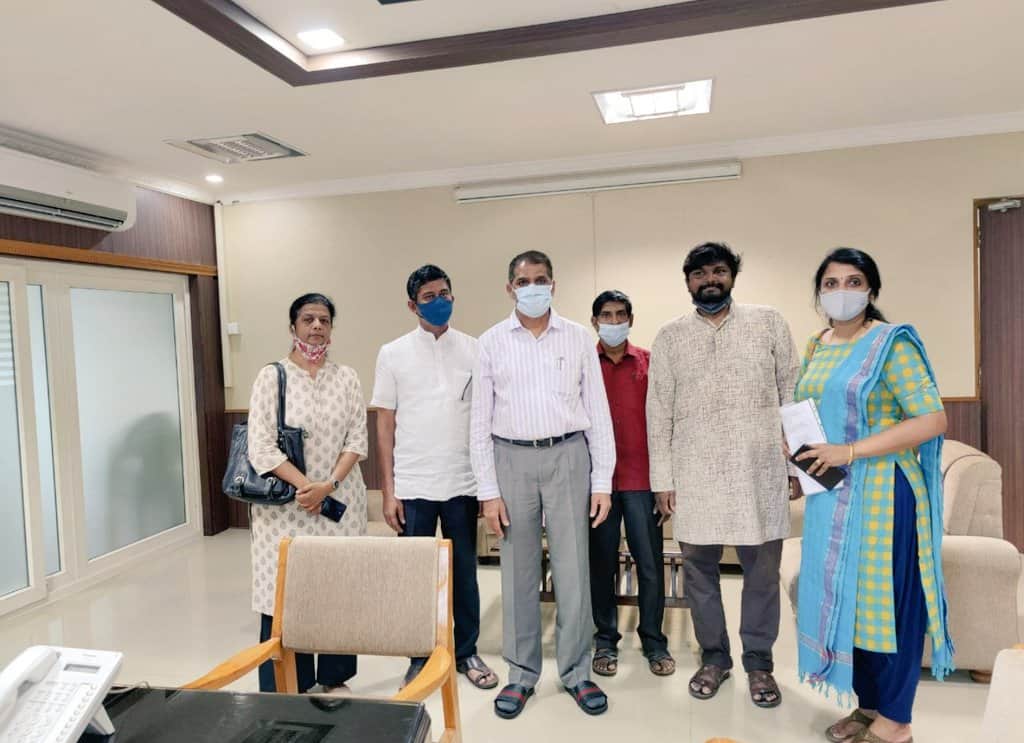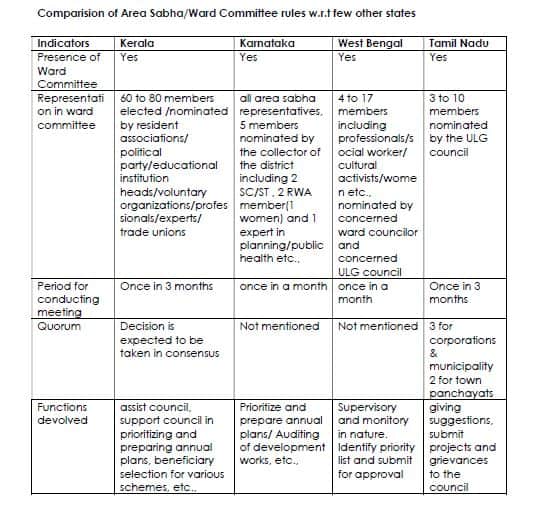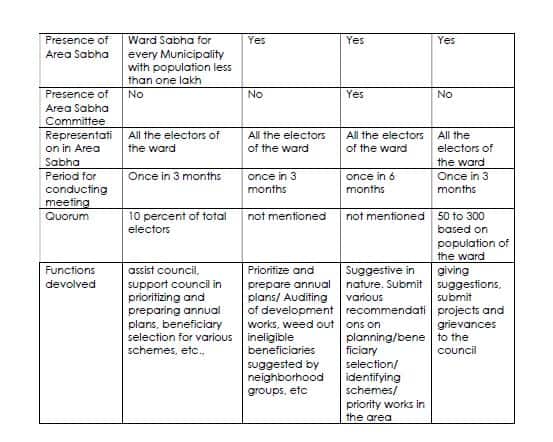In the past few months, the Tamil Nadu Government has taken certain steps to create platforms for democratic participation in an urban setting. These include the formation of Area Sabhas and Ward Committees.
They had been envisioned to function similar to Gram Sabhas, a constitutionally approved platform that exists in rural parts of our country, where people come together and deliberate on developmental issues. They also pass resolutions to achieve their developmental needs. Every village panchayat performs various functions as well as conducts social audits which are then approved by the Gram Sabha to ensure transparency and accountability.
Area Sabhas and Ward Committees are formulated to act in a similar manner in urban areas.
What are Ward Committees and Area Sabhas?
A Ward Committee is a democratically elected body which will be headed by the elected representative of a particular ward and include members who work for the development of the ward. In the context of the city administration, these committees are the need of the hour for the people of Tamil Nadu. They will serve as a platform for the people to exercise their democratic rights and to instil the spirit of participatory democracy in cities.
An Area Sabha is defined as the body of electors in the area covered by one or more polling booths in a particular ward. Every ward will have a certain number of Area Sabhas based on the population.
In 2010, the-then DMK Government passed the Tamil Nadu Municipal Laws (Amendment) Act, 2010 (Act. No 35 of 2010) which mentioned the inclusion of Area Sabhas and Ward Committees in urban local self-government. But the rules for the same had not been framed or implemented in urban local governments until recently. Twelve years have passed since the passage of the law before the rules have been notified.
After long-standing demands and continuous advocacy from various civil society organisations, the present state government published the rules for implementing Ward Committees and Area Sabhas. The rules were published on June 24.
Bizarrely, the Government of Tamil Nadu released the rules by putting them up only on the gazette website. There were no press releases provided by officials to disseminate the information to the media and no other communication to the general public. The rules were also released only in English.
What do the rules say?
In order to provide some clarity on these rules, here is a list of key takeaways and potential issues that could stem from them.
- The Executive Authority who is an officer of the State Government (Commissioner or Executive Officer) has complete control of the functioning of Ward Committees and Area Sabhas.
- Areas under each ward are to be determined by respective District Collectors in discussion with their respective Commissioners/Executive Officers.
- The number of areas per ward for Corporations, Municipalities, and Town Panchayats has been fixed without considering the population of each ward. This raises fears that there could be a lack of proper representation in Area Sabhas. Lack of representation will ultimately fail to capture the people’s opinions on various developmental issues.
- There is no clarity with regard to the size and population of the urban areas in question while formulating the rules. Instead, the rules seem to be the same as the Grama Sabha quorum rules.
- There is no mention of equitable representation for women, the differently-abled, persons from scheduled castes, scheduled tribes and other marginalized communities on these platforms. In the case of Gram Sabhas, there must be 1/3rd representation for women and representation from SC, ST and other marginalised communities as per the proportion of the population.
- The role and nature of participation of key stakeholders and experts from various spheres of development such as education, public health and environmental conservation have not been mentioned in the document. In Kerala and Karnataka, however, the respective governments had included the participation of these subject matter experts in their Area Sabha and Ward Committee rules. Considering the various urban developmental issues and problems we face today, the role of experts on these platforms is crucial to strengthening people’s voices.
- There is no clarity about the linkages and synergy between Area Sabha and Ward Committees since both directly report to the council with a similar set of functions.
- There is a lack of clarity around the tenure of Area Sabhas and Ward Committees and their members.
- There is no mention of the process of selection of chairperson of the Area Sabhas. The basis of appointment and selection of members of the Area Sabhas has also not been mentioned. This could pave the way for a lack of transparency in the potential functioning of these bodies.
- The major function of both platforms is only suggestive in nature and doesn’t present much scope for the general public to have a say in their own area’s developmental process. The bodies also mainly act as grievance redressal platforms but many departments in the corporations and municipalities of Tamil Nadu already have their own grievance redressal mechanisms in place.
From the above table, it is evident that compared to other states, the Tamil Nadu Government has diluted the powers of the Area Sabhas and Ward Committees. It seems as though the State Government wants the urban local governments to be controlled by an officer of the State Government and not by the elected representatives of the urban local governments.
Read more: As India steps into her 73rd year, let’s ask for area sabhas in our city
What the state government could have done
Prior to the announcement of the rules, various civil society organizations and collectives in Tamil Nadu led by ‘Voice of People’ took steps to meet with the ministers and officials so as to have some level of consultation on the matter.
No proper consultations were organised on the part of the government prior to the framing of the rules. Civil society organisations met the officials and requested them to conduct stakeholder discussions and public consultations before the enactment of these rules. But this was not taken into consideration. In fact, a model set of rules for the creation of Area Sabhas and Ward Committees in Tamil Nadu was shared with the authorities concerned. It appears that none of these recommendations has been taken into consideration.

In the model rules for Area Sabhas and Ward Committees, civil society groups had shared a few suggestions which have been left out of the ambit of the rules.
- Proper Representation of women, Scheduled Castes, Scheduled Tribes, differently-abled people and other marginalized sections is crucial to bring about inclusion.
- Functions mentioned in the 12th schedule of the Indian constitution as per the 74th Constitutional Amendment act should be devolved so that participatory planning and budgeting will take place for each area and ward.
- Social audits of projects, schemes, and programs to bring accountability and transparency into the functioning of these bodies are necessary.

Instead of creating arbitrary rules, the State Government could have made a genuine effort by setting up official consultations with civil society organisations, the general public, as well as experts from various spheres of development in the process of preparing the rules.
Among those consulted, present Council Members from Corporations, Municipalities, and Town Panchayats could have been included as well. Further, the draft should have been disseminated to the general public in order to accommodate more suggestions which could have been incorporated into the final version.
Read more: Constant vigilance needed for effective local governance in Chennai
A historic move without intent
On the whole, the present Tamil Nadu government made a historic move after twelve long years, to activate Area Sabhas and Ward Committees in all urban local governments. However, the initiative lacks the intent and spirit of decentralisation.
Decentralization, in this case, can be understood as the process of transferring or taking away certain powers from the Union Government and State Governments and giving them to Local Self-Government. Compared to Gram Sabhas, where the aim to ensure accountability and transparency in the governance system is clear, Area Sabhas and Ward Committees seem to fall short in their formulation.
In addition, the question of whether these platforms will include the voice of marginalized communities still remains unanswered. As long as the powers entitled to urban local bodies, enshrined in the 74th Constitutional Amendment Act of the Indian Constitution, are vested with higher officials, power to the people in urban local governments will remain a myth even after the formation of new councils.



